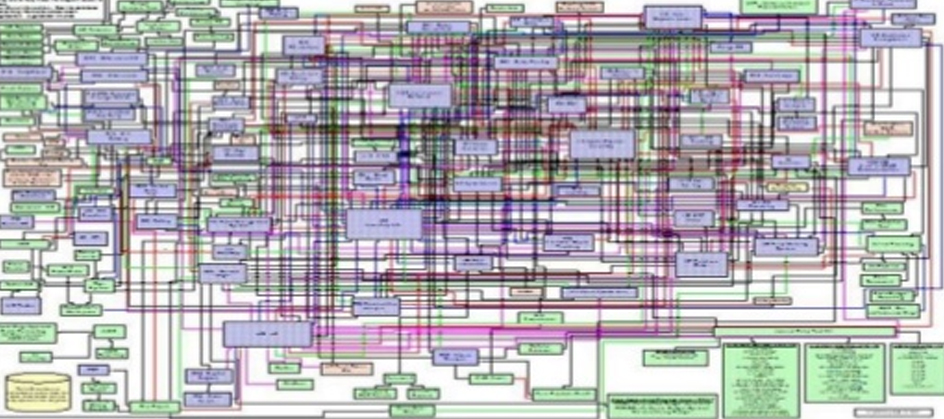The NYSE and a major airline shut down and, in the case of the airline, shuts down twice is just over a month. Major retailers and a Federal employee databases get hacked. This seems like IT service levels from 1965 not 2015.
Does anyone still believe the application economy can actually work the way it should?
Deep inside, probably not. But we’ve been told that if we want to look for restaurants from our smartphones, we must accept hacks and outages in the bargain. So onward we march in deep denial.
The empirical reality, however, is clear. You can’t build a secure, stable application economy on incomprehensibly complex distributed infrastructure.
Facing Facts
Our failure is not due to lack of effort or skill. For three decades, we’ve invested countless dollars and hours trying to cobble together reliable distributed applications from piece-parts on top of piece-parts provided by tenuously related vendors.
And, we’ve had some successes. You can now order a shirt online. Most of the time. And you can track shipments from one continent to the other—if you don’t mind cyber-espionage agents in the employ of a foreign government tracking them too.
And, we keep trying. In fact, in light of these recent incidents, we can expect even more dollars and effort to be spent on still greater—but equally fruitless—attempts to bring coherence by adding more complexity to the hodgepodge of OSs, networks, hypervisors and APIs that masquerades as viable underpinning for the application economy.
But it won’t work. Just ask anyone who needed a U.S. visa last month.
A Sacrilegious Suggestion: Leverage Your Mainframe
Is the solution to abandon digital commerce? Of course not. Markets thrive on information. So digital enablement of the global economy remains the transformational reality of our age.
But we clearly need a postmodern platform that is demonstrably stable, secure, scalable, and cost-effective.
That platform is the mainframe.
With the mainframe, you don’t have to live in fear of teens with shareware cracking tools. You don’t have to bulldoze your old, over-hyped, silver bullet distributed infrastructure to make room for your new over-hyped, silver bullet distributed infrastructure. You don’t have to run three different hypervisors and then license five tools to manage and secure those hypervisors.
You can also double your workload volume without hiring anyone at all.
And in case you forgot, “five 9s” availability on the mainframe isn’t an aspiration. It’s table stakes.
Not Backwards. Fast Forward.
I am by no means advocating a return to an outdated model for IT. No one would benefit if we gave up on agile and modern, high velocity application development capabilities. Winning in the digital economy demands the mastery of these capabilities.
But the postmodern mainframe is nothing like the mainframe of the 1970’s. Today’s mainframe is perfectly capable of business agility. It can run Docker, Java and Linux VMs. Its new specialty processors de-couple those workloads from IBM’s historical usage-based licensing models. And all this comes with the extraordinary functional and financial virtues that only the mainframe can offer.
So, if our goal is to win in the application economy, perhaps we should consider our current failed model of unreliable, insecure distributed piece-parts to be the “legacy” system.
The postmodern mainframe, it turns out, may be where the truly forward-thinking invest their time and effort as they pioneer an application economy that actually works.
Originally published on LinkedIn Pulse.








0 Comments